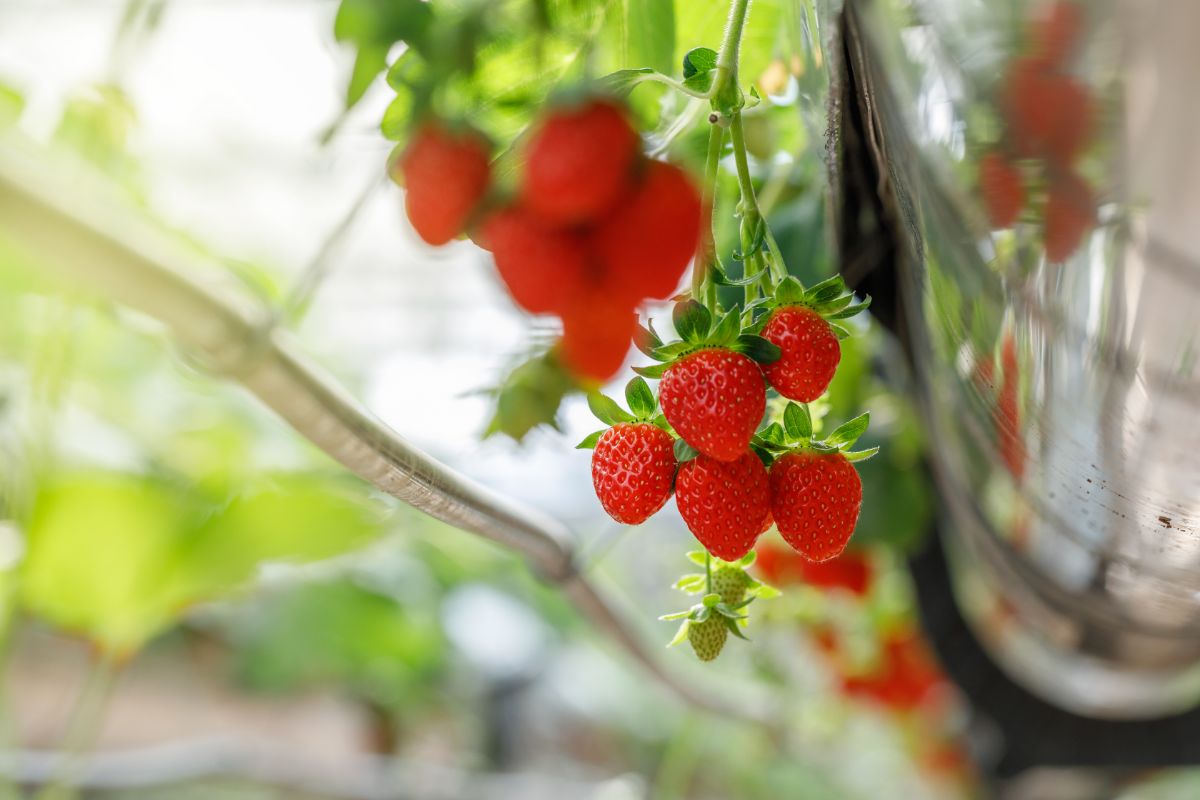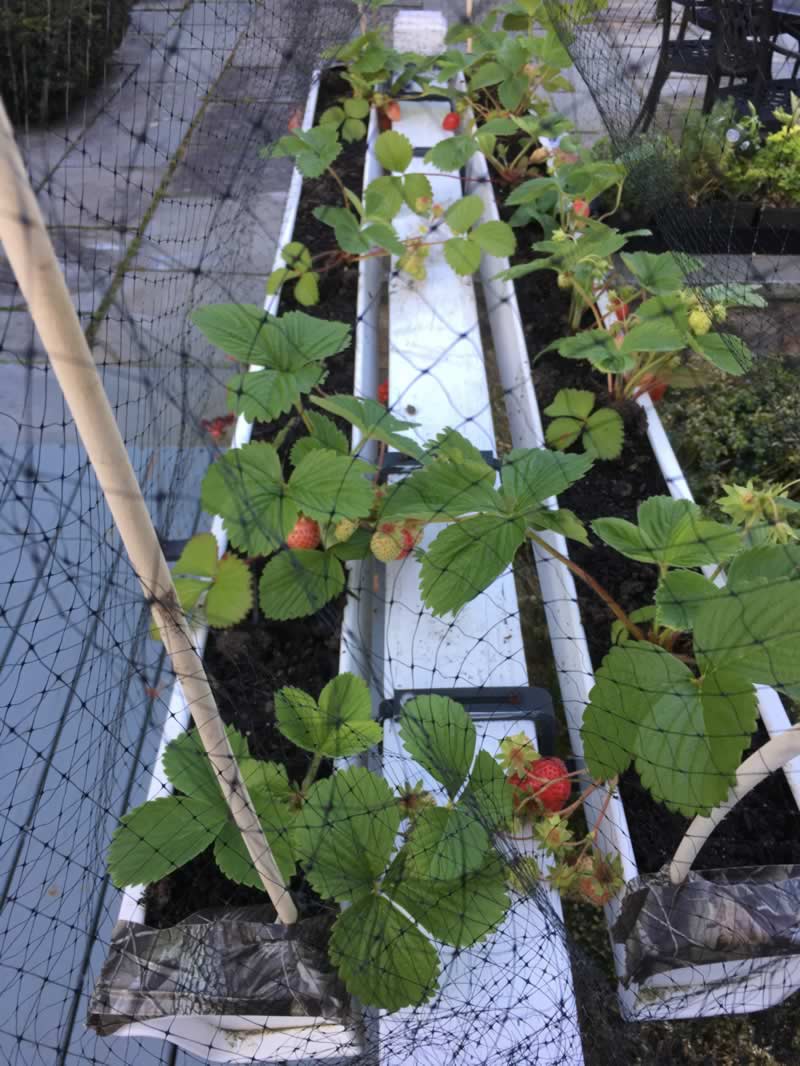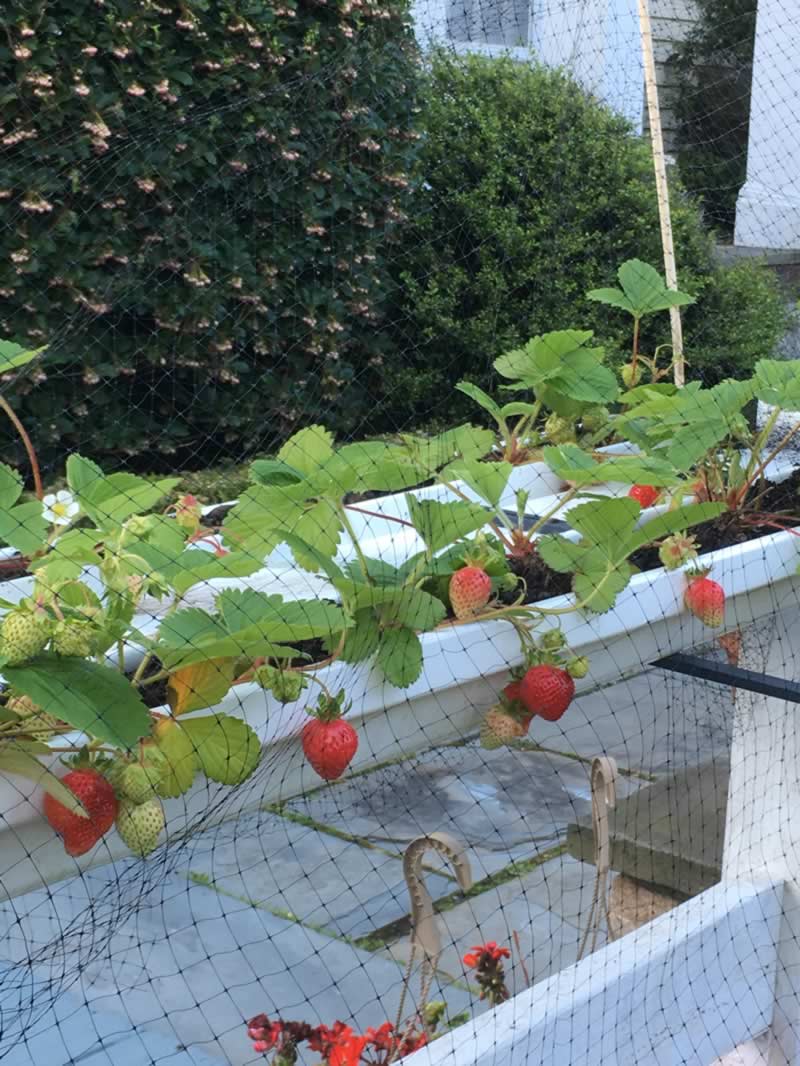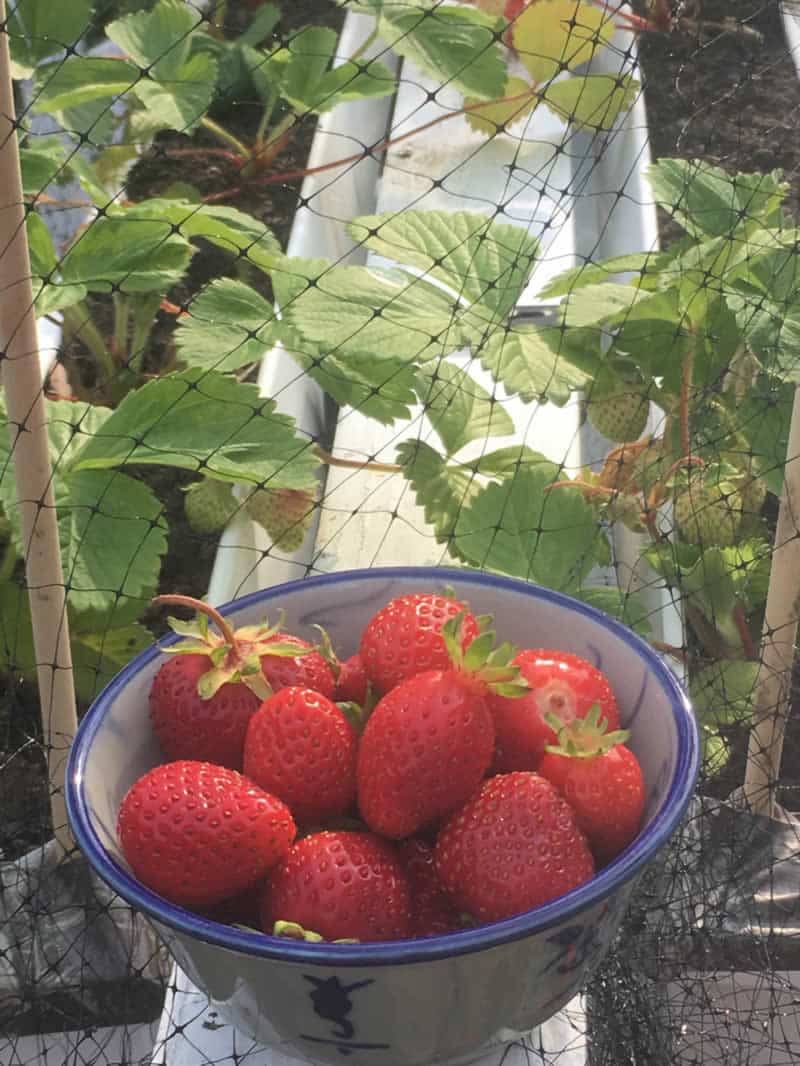ADVERTISEMENT
Grow Strawberries in Rain Gutters is our topic, how to plant? Though not everyone has the space to maintain a garden, the flavor of a strawberry from the store will never be able to match that of a strawberry grown at home.
Fortunately, you can grow your own strawberries in a rain gutter that has been turned into a planter. To grow the plants vertically, you can install these planters on a deck rail or attach a number of them to the side of your home or shed.
One of the best fruits to consume You’ve come to the right site if you want to discover how to grow strawberries in gutters. While growing strawberries in pots is simple, using rain gutter planters to save space is more practical.
Not to mention, homegrown strawberries never have the same flavor as strawberries from the supermarket.
Rain gutters can be fixed vertically to the side of your house or shed to make a “strawberry wall,” or horizontally to the side of decks. Depending on plant size, a rain gutter that is about 4 and a half feet long can support 3–4 strawberry plants.
These gutters make gardening considerably simpler while also keeping pests at bay.

Not to mention, homegrown strawberries never have the same flavor as strawberries from the supermarket. Image source: Live Love Fruit
Growing Strawberries in Rain Gutters
The similar idea can be applied to the cultivation of herbs and lettuce. It helps you enhance your produce output while saving space.
Many people have developed unique strategies for creating their own rain gutter gardens.
Although strawberry plants typically produce for three to four years until they are finished, we were able to extend the life of ours by one additional year. But this year, a fresh start was really necessary.
We therefore made the decision to start fresh by planting and raising our new strawberry plants in rain gutters. We’ll be updating you on this entertaining gardening experiment as we go along, including any successes or mistakes.
We are aware that as we learn, we may constantly improve. We are having such a great time as we go along. Isn’t that the main focus here?

Planting strawberries in rain gutters, Hence, we arrive at this season. Image source: Live Love Fruit
We had some wood rot and termite issues in a few of them last season, but we managed to use them for one more season, where they served their purpose and let us get by for another year.
But the recent harsh winter gave them the final kick in the behind, and as soon as spring arrived, they literally immediately started breaking apart. Included in that is our strawberry bed.
But the timing was ideal to start everything over from scratch since it was time to restart with new strawberry plantings anyhow.
Therefore, we started planning and building all of our new garden beds. The remaining information will be shared with you in an upcoming post.
But we choose to try utilising rain gutters for the strawberry cultivation!

Growing Strawberries in Rain Gutters. Image source: growingfruit.org
Things You’ll Need to Grow Strawberries in Rain Gutters
- Tape measure
- Pencil
- Tin snips
- Hand or Circular saw
- Gutter end-caps
- Pliers
- Silicone caulk
- PVC glue
- 1/4-inch drill bit
- Power drill
- Potting soil
- Gardening trowel
- Strawberry transplants
- Scissors
- Watering can
- Fertilizer

Growing Strawberries in Rain Gutters. Image source: growingfruit.org
How to Grow Strawberries in Rain Gutters
Make two more markings 9 inches apart from each gutter end to indicate the proper distance between the three strawberry plants.
Before you fill the gutter with potting soil, apply a bead of pure silicone caulk to the interior end-cap seam. Wait until the silicone is completely dry.
Before filling the gutter with soil when using PVC end caps, add PVC adhesive to the end cap and gutter and press firmly into position.
Use a power drill and a quarter-inch drill bit to create the drainage holes.
If the planter is to be placed on a flat area, elevate gutters on flat stones, bricks, or landscape pavers to allow for proper drainage.
To raise the plants off the ground, you can also use rope or mounting brackets to attach the gutter planter to a fence, deck railing, or the siding of the house.

Growing Strawberries in Rain Gutters. Image source: growingfruit.org
To facilitate planting, use scissors to cut the strawberry transplant’s roots to a height of 6 inches.
Grow the strawberries in the early spring; in areas with milder winters, you can even plant them in the fall.
The transplants should be placed so that the top roots are at least 1/4 inch below the soil and the crown is just visible above it.
If the strawberries are planted too deeply, the crown will decay, and if planted too shallowly, the roots will dry up. As an alternative, you can plant seeds 1/4 inch below the surface of the soil.
Plant four to five seeds per planting area, then when seedlings appear, thin the seedlings to leave the healthiest plant.
For ever-bearing and day-neutral strawberries, pinch the blossoms until the end of June, then allow the flowers to mature and bear fruit; this encourages root growth and increases crop yield.
Because the growing area in gutter containers is insufficient to sustain more plants, remove runners from there.
Fertilize Strawberries that bear in June need to be fertilized twice a year: once very lightly when plant growth starts and once more after the plant bears fruit.
Strawberry plants that are ever-bearing and day-neutral prefer regular light fertilizer about once every two weeks.

Image source: growingfruit.org
Additional tip on Growing Strawberries in Rain Gutters
If you want to get fruit in the first growing season, don’t pluck the blossoms off of crops that bear in June.
Keep in mind that if you don’t pinch the blossoms, the plant won’t grow as big and won’t produce as much fruit in the following seasons.
Warning
When working with metal gutters, always wear heavy gloves because the cut edges are extremely sharp before end caps are added.




